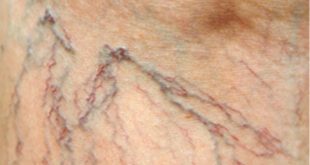By Elizabeth Dosoretz, LCSW
 ADHD and PTSD may seem like completely different conditions, but their symptoms often overlap in ways that can make telling them apart difficult. Trouble focusing, impulsivity, and emotional ups and downs can show up in both, leading to confusion or even misdiagnosis.
ADHD and PTSD may seem like completely different conditions, but their symptoms often overlap in ways that can make telling them apart difficult. Trouble focusing, impulsivity, and emotional ups and downs can show up in both, leading to confusion or even misdiagnosis.
It is not uncommon for someone to experience both at once. Studies show that anywhere from 12% to 37% of people with one of these conditions may also have the other. Understanding how they intersect isn’t just helpful but essential for getting the right diagnosis and finding real, lasting relief.
What is ADHD?
Attention-Deficit/Hyperactivity Disorder (ADHD) is a neurodevelopmental condition that begins in
childhood and often continues into adulthood. It involves patterns of inattention, hyperactivity, and impulsivity that can affect school, work, relationships, and self-esteem.
There are three types: inattentive, hyperactive, and combined. Inattentive ADHD makes it hard to focus or stay on task, while hyperactive ADHD involves high energy and impulsive behaviors. Combined includes both.
For children, symptoms usually appear before age 12. They might struggle to sit still, complete assignments, or follow directions. Over time, the hyperactivity may ease, but challenges with focus and organization often remain. Consistency, structure, physical activity, and clear routines help children thrive. Medication and behavior therapy can also make a meaningful difference when used together under professional guidance.
For adults, ADHD can look different: being easily distracted, struggling to manage time or juggling too many responsibilities without follow-through. Many adults weren’t diagnosed as children and only realize what’s going on once life becomes more demanding. This is particularly true for women, who may present with anxiety, depression or emotional overload instead of classic hyperactivity. Hormonal shifts—during puberty, pregnancy, or menopause—can make symptoms even more noticeable.
Left untreated, ADHD can contribute to frustration, low self-esteem and difficulty meeting goals. Recognizing it early and creating supportive systems can dramatically improve long-term well-being.
What is PTSD?
Post-Traumatic Stress Disorder (PTSD) develops after experiencing or witnessing a traumatic event. It’s not just about feeling shaken or stressed; it’s when the brain continues to react as though the danger is still happening, even long after the event is over.
This can include nightmares, flashbacks, or being constantly on alert. It can impact sleep, focus, relationships, and daily functioning. Some people may avoid reminders of the trauma, while others experience sudden emotional outbursts or feelings of detachment. Over time, untreated PTSD can also lead to depression, anxiety, or physical health challenges like fatigue or chronic pain.
Over time, untreated PTSD can also lead to depression or anxiety. But with the right care, healing is possible.
Understanding the Connection
When ADHD and PTSD overlap, symptoms like restlessness, distractibility, and emotional
dysregulation can intensify. For some, untreated ADHD can make it harder to cope with trauma;
for others, trauma can trigger ADHD-like behaviors as the brain struggles to manage hyperarousal or anxiety.
Both conditions can also interfere with memory, focus, and emotional regulation, creating a cycle of frustration that can be difficult to break without help. This is one reason why it’s so important to work with a clinician who can help identify what’s trauma-related and what’s neurodevelopmental.
Treatment and Healing
Both ADHD and PTSD benefit from individualized, evidence-based treatment. Skills learned during these therapies, such as mindfulness, emotional awareness and structured problem-solving, can also help individuals with PTSD manage triggers and regulate intense emotions.
Cognitive Behavioral Therapy (CBT) and Dialectical Behavior Therapy (DBT) are highly effective for ADHD, helping people understand their emotions, improve focus, and develop healthy coping tools.
For PTSD, trauma-specific therapies like CBT or Eye Movement Desensitization and Reprocessing (EMDR) can help the brain safely process traumatic memories. EMDR, guided by a certified therapist, uses eye movements or bilateral stimulation to help reduce the emotional impact of memories and alleviate associated symptoms. An evidence-based therapy, EMDR has been supported by scientific research and numerous studies have shown its effectiveness in treating trauma and other mental health
conditions.
With the right combination of therapy, medication and lifestyle support, it’s possible to manage your symptoms of both ADHD and PTSD and improve your quality of life.
Remember, you’re not alone. Recovery is within reach.
About the Author
Elizabeth Dosoretz, LCSW, is the founder and CEO of Elite DNA Behavioral Health. As a mother of three, her personal journey through the challenges of postpartum depression inspired her to found Elite DNA Behavioral Health in 2013 with a goal to provide accessible, affordable mental health care to everyone. Now one of the largest mental health providers, Elite DNA provides in-person and virtual behavioral health services from nearly 40 locations across Florida and Virginia. For more information, visit EliteDNA.com.
1201 US-1 #250
North Palm Beach, FL 33408
516-576-7536
 Central Florida Health and Wellness Magazine Health and Wellness Articles of the Villages
Central Florida Health and Wellness Magazine Health and Wellness Articles of the Villages



